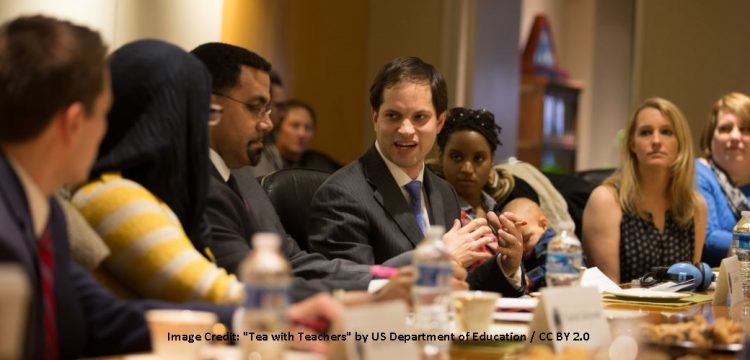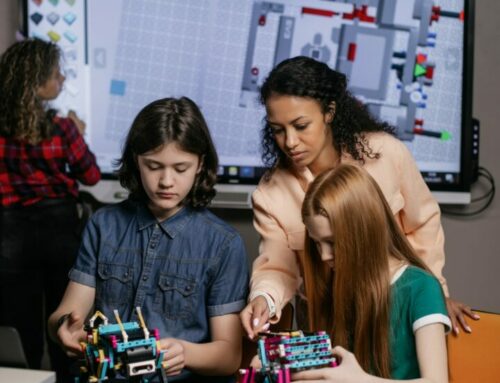A collective way for faculty to transform education
Patrick Blessinger, Barbara Cozza, and Milton Cox
St. John’s University (NYC), USA and Miami University, USA
A faculty learning community, or FLC, is a group of faculty members who share a common desire to improve teaching and learning outcomes. To this end, faculty meet on a regular basis (say once or twice a month) to collaborate and share their knowledge and practices on how to become better teachers and how to produce better learning outcomes for students.
The FLC concept, pioneered by Milton Cox and Laurie Richlin, has evolved over the past few decades into a template for faculty-led groups to transform teaching and learning processes and practices. FLCs are grounded in the ideas of John Dewey and Alexander Meiklejohn, among others, who advocated for active, inquiry-based, student-focused teaching and learning. The FLC model is now used by many educational institutions around the world.
The ideas related to an inquiry-based approach to faculty development are discussed in the book, Inquiry-Based Learning for Faculty and Institutional Development.
Definition of a community of practice
An FLC can be considered a type of community of practice, or CoP. Popularised by educationalists Jean Lave and Etienne Wenger, a CoP is defined as a group of people who share a common interest in a particular topic who come together on a regular basis to learn more about that topic.
So, CoPs consist of three main components: the domain (the topic of shared interest), the community (the like-minded participants) and the practice (activities, processes, methods, rules, etc, used to achieve the group’s goals).
Rather than defining learning simply as knowledge acquisition, the original concept of a CoP centred on the concept of situated learning (that is, learning as a social process, where learning occurs within the same context in which it is applied). However, the concept of a CoP has since evolved to include online CoPs that are global in nature and use internet-based technologies.
Thus, the context of a CoP may be face-to-face or it may be online or some combination of the two. Regardless of the mode of delivery, it is through active participation in the CoP that members develop professionally (affectively, behaviourally and cognitively).
For example, as part of the HETL global community on LinkedIn, faculty and educational leaders from around the world come together in an online CoP to discuss common issues affecting higher education. This online CoP serves as a self-organising, faculty-led CoP for the purpose of professional development.
Definition of an FLC
FLCs are made up of faculty members who come together to learn from each other. This concept has also been extended to primary and secondary education where such groups are known as professional learning communities. In an FLC or a professional learning community, faculty come together for the purpose of improving teaching and learning. In so doing, the group forms a shared aim and identity that is important to the success of the group.
FLCs are structured, research-based and focused on collaboration, shared interests and common goals. The main focus of an FLC is to create a sense of community through reflective inquiry, mutual support and peer-assisted learning.
FLCs may be either cohort-based or topic-based. In a cohort-based FLC, the participants belong to a particular cohort such as junior faculty or adjunct faculty who may feel isolated from other faculty in other departments or even within their own department. Or, the cohort might consist of mid-career faculty or faculty preparing to become department chairs or director level leaders. Topic-based FLCs are formed around a specific topic or theme, such as interdisciplinary research or integrated learning.
FLCs are multidisciplinary (that is, faculty from different disciplines working collaboratively), cross-disciplinary (that is, viewing a discipline from other disciplinary viewpoints) and interdisciplinary (that is, integrating knowledge from different disciplines into one’s own discipline).
As such, FLCs bring together faculty from diverse disciplines and perspectives to learn from and support each other. In an FLC, all disciplines are equally valued as they all have the same shared aim: to improve teaching and learning.
FLCs and PLCs are based on the same underlying principles and aims. In these learning communities, faculty come together, with the support of administration, for the purpose of improving teaching and learning, and in so doing, the group forms a shared aim and identity which is important to the success of the group.
FLCs as catalysts for change
FLCs complement more traditional one-off forms of faculty development such as conferences, workshops, seminars and symposiums by serving as a job-embedded, peer-led, self-organising form of continual professional development.
In a research study conducted by Blessinger, Cozza and Cox – “Principles of effective faculty learning communities in higher education” in Learning Communities Journal – several high-impact practices of FLCs were identified.
Effective FLCs:
- Use research-based practices and principles;
- Transfer what is learned in the FLC to the classroom;
- Provide integrative, collaborative and experiential learning activities for participants;
- Provide meaningful peer recognition of success;
- Address the cognitive, emotional and social needs of participants;
- Cultivate learning-centred teaching and active learning environments;
- Transform faculty from isolated content specialists into collaborative instructional leaders.
These findings suggest that, if properly designed and implemented, FLCs can provide a useful vehicle for developing instructional leaders and facilitating higher-order learning in students. When coupled with other forms of high-impact inquiry-based learning practices such as research-based learning and creative learning, learning can even be transformational.
To this end, in designing an FLC, one should develop a clear purpose for the FLC and use the FLC planning framework to guide the design and development of the FLC.
Improving academic performance
FLCs are being used on a wide range of topics, including fostering inclusive classrooms, improving assessment techniques, implementing learning technologies, team teaching, teaching portfolios, curricula development and writing across the curriculum, to name a few. FLCs engage faculty in complex problem-solving and experiential learning that faculty can use directly and immediately in the classroom.
FLCs allow for different levels and types of faculty participation. Since they are peer-led and admin-supported they evolve naturally in response to administrative, faculty and learner needs. FLCs not only create cultural capital in the form of new knowledge and skills for the participants but they also create social capital by building meaningful social networks among faculty through reciprocity, collaboration and support.
Patrick Blessinger is an adjunct associate professor of education at St John’s University, New York City, USA, and chief research scientist for the International Higher Education Teaching and Learning Association. Barbara Cozza is an associate professor of education and programme director at St John’s University, New York City, USA. Milton Cox is director of the Lilly Conference on College Teaching and editor-in-chief of the Journal on Excellence in College Teaching, Miami University, USA.
Note: this article also appears in the University World News blog at http://www.universityworldnews.com/article.php?story=20170620134535970
Suggested Citation:
Blessinger, P., Cozza, B., & Cox, M. (2017). A collective way for faculty to transform education, Higher Education Tomorrow, Volume 4, Article 6, https://www.patrickblessinger.com/a-collective-way-for-faculty-to-transform-education
Or
Blessinger, P., Cozza, B., & Cox, M. (2017). A collective way for faculty to transform education, University World News, http://www.universityworldnews.com/article.php?story=20170620134535970
Copyright © [2017] Patrick Blessinger, Barbara Cozza, and Milton Cox
Disclaimer
Opinions expressed in this article are those of the author, and as such do not necessarily represent the position(s) of other professionals or any institution.




